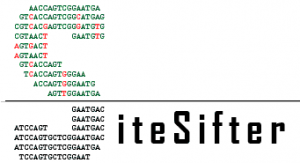Status:
Platform:
Implement Technique:
Species:
Recognition sites for microRNAs (miRNAs) have been reported to be located in the 3' untranslated regions of transcripts. In a computational screen for highly conserved motifs within coding regions, we found an excess of sequences conserved at the nucleotide level within coding regions in the human genome, the highest scoring of which are enriched for miRNA target sequences. To validate our results, we experimentally demonstrated that the let-7 miRNA directly targets the miRNA-processing enzyme Dicer within its coding sequence, thus establishing a mechanism for a miRNA/Dicer autoregulatory negative feedback loop. We also found computational evidence to suggest that miRNA target sites in coding regions and 3' UTRs may differ in mechanism. This work demonstrates that miRNAs can directly target transcripts within their coding region in animals, and it suggests that a complete search for the regulatory targets of miRNAs should be expanded to include genes with recognition sites within their coding regions. As more genomes are sequenced, the methodological approach that we used for identifying motifs with high sequence conservation will be increasingly valuable for detecting functional sequence motifs within coding regions.[1]
The coding sequence of a protein must contain the information required for the canonical amino acid sequence. However, the redundancy of the genetic code creates potential for embedding other types of information within coding regions as well. In a genome-wide computational screen for functional motifs within coding regions based on evolutionary conservation, highly conserved motifs included some expected motifs, some novel motifs and coding region target sites for known microRNAs, which are generally presumed to target 3' untranslated regions (UTRs) (www.SiteSifter.org). We report here an analysis of published proteomics experiments that further support a functional role for coding region microRNA binding sites, though the effects are weaker than for sites in the 3' UTR. We also demonstrate a positional bias with greater conservation for sites at the end of the coding region, and the beginning and end of the 3' UTR. An increased effectiveness of microRNA binding sites at the 3' end of transcripts could reflect proximity to the poly(A) tail or interactions with the 5' terminal 7mGpppN "cap", which is physically adjacent to this region once the message is circularized. The effectiveness of 3' UTR sites could reflect a cooperative role for RNA binding proteins. Finally, increased microRNA conservation near the stop codon suggests to us the possible involvement of proteins that execute nonsense-mediated decay, since this process is activated by tagging of termination codons with factors that induce transcript degradation.[2]
References
- A search for conserved sequences in coding regions reveals that the let-7 microRNA targets Dicer within its coding sequence.,
, Proc Natl Acad Sci U S A, 2008 Sep 30, Volume 105, Issue 39, p.14879-84, (2008)
- The code within the code: microRNAs target coding regions.,
, Cell Cycle, 2010 Apr 15, Volume 9, Issue 8, p.1533-41, (2010)







